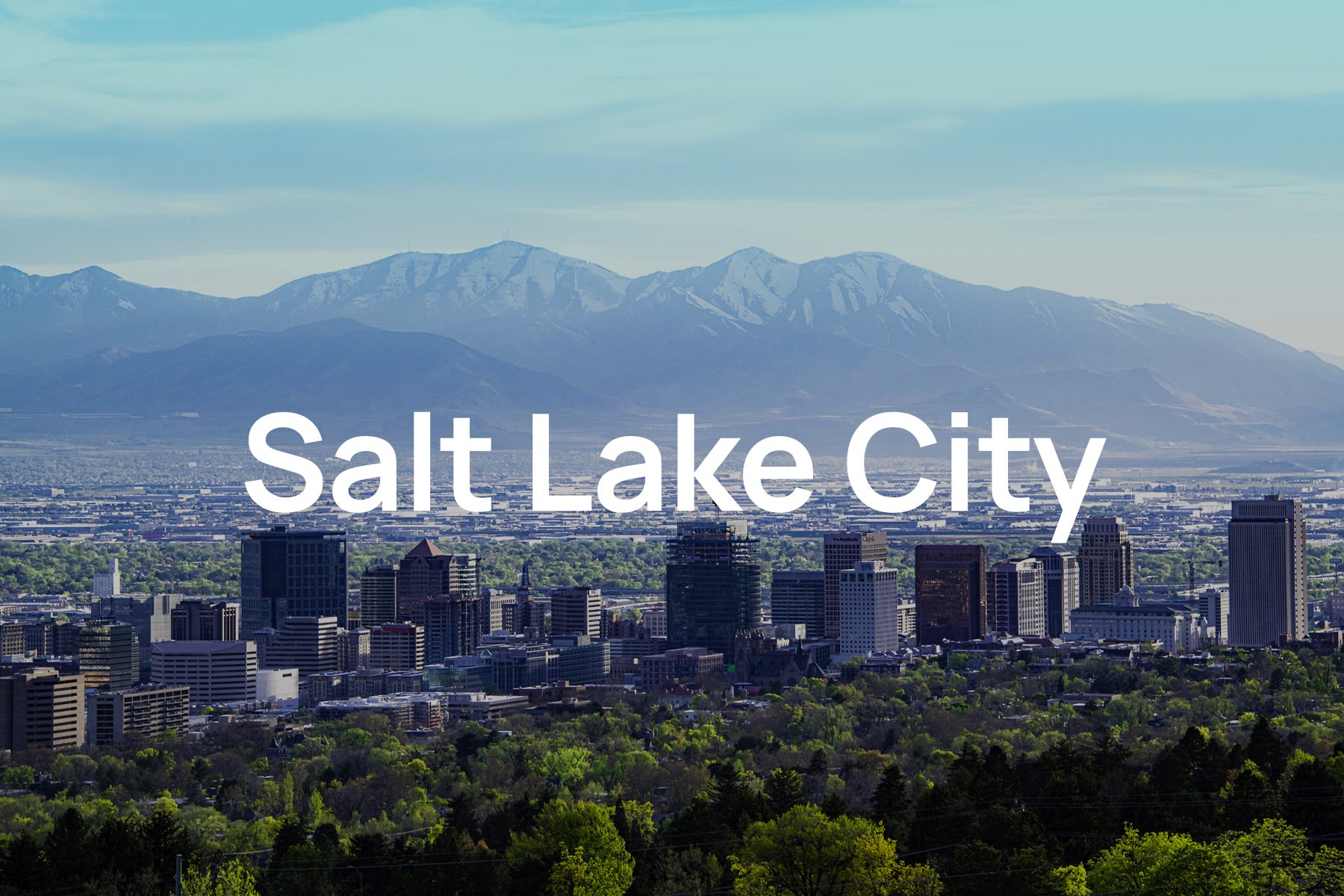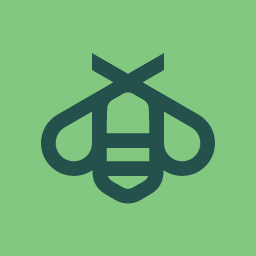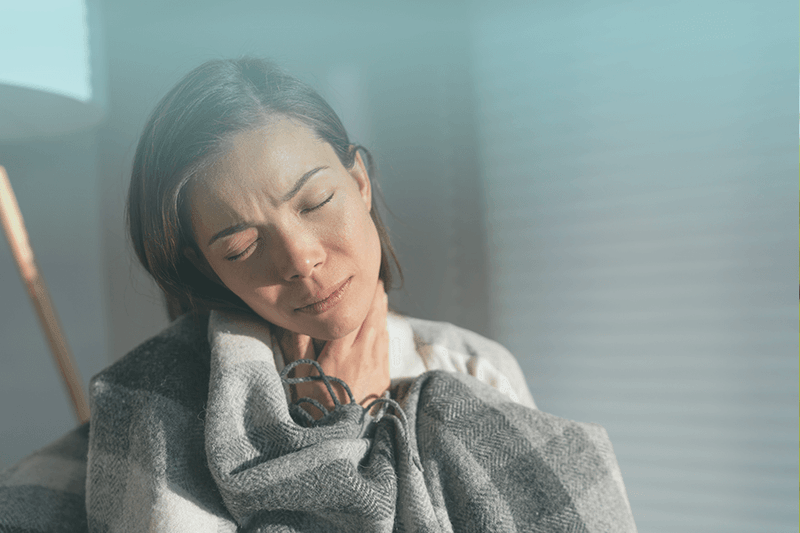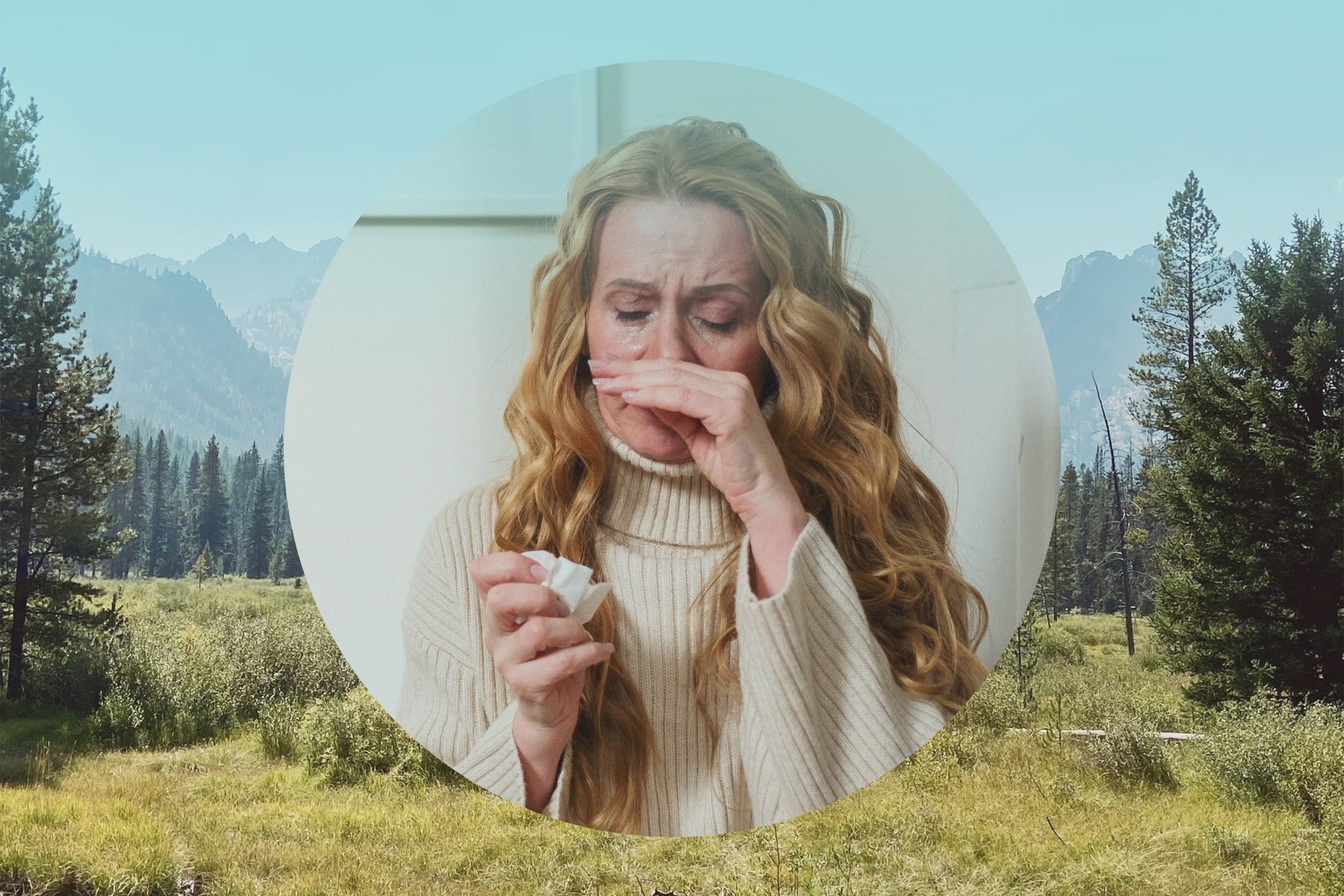Breathe Freely

Pollen Allergies in Salt Lake City: An Expert Guide
Rooted in the mountain-flanked Salt Lake Valley, the city of Salt Lake is a paradise for skiers, nature lovers, and admirers of elevated living. For residents and tourists, “The Crossroads of the West” intersects many commonalities. Allergies, unfortunately, are one of them!
Seasonal Pollen Allergies in Salt Lake City
When we talk about pollen allergies, we typically refer to changes in pollen types between and within seasons. With grass, trees, and weeds all pollinating at various times throughout the year, Salt Lake City allergy sufferers should always be mindful.
Unlike other cities, Salt Lake City owes part of its distinct allergy patterns to Utah’s unusual climate profile. With a quasi-arid, desert-like climate, Utah historically brings low humidity. In fact, the typical July may bring only 36% humidity with the average December right around 74% humidity.

Salt Lake City’s Climate Characteristics
In Salt Lake City, unique geographical features make its climate and allergy seasons highly distinct. Thanks to the Great Salt Lake above it, the Wasatch Mountains to the east, and the Oquirrh range to the west, Salt Lake City can experience atypical weather patterns.
Winters can be frigid and snow-filled, summers are generally hot and dry, and spring and fall typically serve as moist intermediate periods. Due to its mountain-valley location, Salt Lake City sees both summers over 100°F and icy winters as cold as 0°F.
If you think all of these changes in precipitation and weather can affect your pollen allergies in Salt Lake City, you’re right!
Is Salt Lake City a Good Place for Pollen Allergies?
According to the Asthma and Allergy Foundation of America (AAFA), Salt Lake City ranks 91st out of the 100 largest metro areas in the U.S. for pollen allergies. This position is designated “Better Than Average,” with the city ranking 80th, 92nd, and 78th for tree, grass, and weed pollen, respectively.
The overall ranking of 91 also includes how well Salt Lake City provides its population access to medical doctors. The research considers only board-certified immunologists or allergists to be qualified specialists. Meanwhile, the ranking also factors in the use of over-the-counter allergy medicine, with higher use indicating greater allergies and allergy needs.
Although these rankings may provide seasonal allergy sufferers a breath of relief, regional allergy trends are always changing. The true story of Salt Lake City’s atmosphere is a little more complicated…
Pollen and Pollution in Salt Lake City
Pollen allergies in Salt Lake City stem from a variety of plant species, everything from White Poplars to Smooth Brome, Burweed, and Russian Olive. Whether or not these plant species ring a bell is less important. What really matters is a crucial fact about Salt Lake City’s atmosphere: it’s heavily polluted.
As the Centers for Disease Control and Prevention (CDC) finds, pollutants and particulate matter can exacerbate symptoms for many asthma and allergy sufferers. Not only that, but common symptoms associated with allergies, such as scratchy throat, sneezing, coughing, and breathing difficulties, also overlap with reactions to pollution.
If you’re suffering from pollen allergies in Salt Lake City, your reactions may intensify due to air quality control issues. These problems typically fluctuate based on shifting weather and seasonal changes.
Unfortunately, pollution in Salt Lake City is considered highly problematic.
How Air Quality Impacts Pollen Allergies in Salt Lake City
According to a 2019 study by the American Lung Association, Salt Lake City ranked 7th worst out of 217 metro areas for 24-hour particulate pollution. Meanwhile, the city also came in 11th for worst ozone pollution. Perhaps, then, it’s no surprise that the city has repeatedly received failing federal grades for both metrics.
Unfortunately, people susceptible to irritants and allergens may find this pollution difficult to overcome. The air quality also varies based on the season. Although people typically think of winter as a reprieve from symptoms, the temperature shifts during December, January, and February often lead to increased issues. This can cause moisture and cool air, as well as pollutants, to linger in the foggy, smoggy valley.
Thanks to the surrounding mountain ranges, these pollutants have nowhere to go, exacerbating asthma and allergy symptoms across the city.
Overlapping Symptoms of Pollution & Pollen Allergies in Salt Lake City
Especially nowadays, it can be difficult to determine the cause of symptoms. Is it a cold or a virus? Is it some variant of COVID-19? Is it caused by pollutants and particulate matter? Is it due to allergic reactions or flu season? What is it?
First, let’s discuss the differences between allergies, colds, flu viruses, and COVID-19. Remember that most colds and viruses don’t cause itchy or watery eyes. Moreover, your typical cold or flu will usually not exceed 14 days. Allergy reactions, however, will last as long as you’re exposed to the allergens, anywhere from days to months! So-called seasonal ‘hay fever’ can cause severe symptoms for weeks on end.
Also, don’t forget that you’re unlikely to get a high fever from allergies, and while allergy fatigue is real, chronic exhaustion is most closely associated with the flu.
As for COVID-19, the differences are pretty stark. With a coronavirus infection, you may experience muscle aches, fever, nausea, vomiting, and diarrhea. These symptoms almost never occur from pollen allergies in Salt Lake City but are common with COVID-19.
Finally, what about similar symptoms of pollen allergies and pollution?
As it turns out, irritation due to pollutants is very similar to symptoms from allergies. In the valley-sealed city of Salt Lake, these two issues often coincide. Whether it’s vehicle emissions or emissions from space heaters, water heaters, or burning wood, the matter in the air loves to hang around.
Symptoms from pollutants may cause discomfort in your throat, eyes, and nose, wheezing, coughing, difficulty breathing, chest pain, and even irregular heartbeat! If you’re experiencing any of these symptoms, speak to a certified healthcare provider for a proper diagnosis and treatment. You can additionally use at-home allergy test kits to help determine if allergies are causing your issues.
Pollen Allergies in Salt Lake City By Season
Given the unique mountain topography, arid climate, and nearby lake effects, Salt Lake City is an allergy melting pot unto itself. However, one way to demystify pollen issues may be through a comparison of seasons. By recognizing the temperature, precipitation, and allergen fluctuations across seasons, you can better prepare for possible symptoms.
Winter Pollen Allergies in Salt Lake City
Chilly and sometimes absolutely frigid, the city’s wintertime months typically get as low as 0°F. In January, even the high temperatures average below freezing. While the city is a beacon for skiers, snowboarders, and other alpine adventurers, all this cold and white can make for some bad allergies.
Starting toward the end of February, various tree species start pollinating, including Pines, Oaks, and Maples. This is also around the time when pollution starts getting trapped in the valley, exacerbating or confusing allergies to tree pollen. With people huddled indoors using their heaters, other issues may fester, such as year-round allergens like dust mites, cockroaches, dander, and mold.
This is a good time to change your filters, clean your indoors, and start watching those pollen counts!
Seasonal Pollen During the Springtime
Salt Lake City’s spring season gives way to warmer temperatures, shaking off the wintry shackles and breathing new life into various plant species. From an average high of 53°F in March to an average high and low of 70°F and 51°F in May, Salt Lake spring is the time to enjoy more comfortable weather.
But don’t forget to mind your allergens! Pollen allergies in Salt Lake City during spring typically stem from trees and grass. Tree species like Birch and Maple may release pollen up till June, while ryegrass, bluegrass, and Bermuda grass get going from the end of spring to the end of summer.
Make sure to change your clothes regularly when going indoors and outdoors, and always keep your furniture, linens, and air filters clean. Close your windows on high pollen count days, and make vacuuming and dusting a regular practice!
Summertime Pollen Allergies in Salt Lake City
Remember, Salt Lake City owes much of its allergies to Utah’s semi-arid, desert climate. This means that summers can get hot. A valley city, Salt Lake may see multiple days reaching or exceeding 100°F. Fortunately, the soaring peaks nearby can be the ideal escape on a blistering day. The temperature drops in the mountains can be 20° or more!
Just be sure you’re prepared. Summer in the city can be especially problematic for people with multiple pollen allergies. Remember, tree pollen doesn’t typically fade until June, and then you’ve got a full summer of grass pollen. And just when you think you’re in the clear, fall weed pollen comes on the scene. These allergenic species include Sagebrush, Ragweed, and Goosefoot, also called Lamb’s Quarters.
If you’re sensitive to these allergens, your best bet during the summer is to monitor certain duties. For instance, it may be wise to avoid yard work and lawn mowing on high-pollen-count days. You can likewise choose to hire somebody to do it for you. In some cases, wearing a mask may help you filter the air and breathe normally.
As always, monitor your local forecasts, practice good home and personal hygiene, and consult an allergist with any questions.
Salt Lake’s Pollen Allergies in The Fall
Fall is marked by a gradual descent into cooler temperatures, with various ski resorts opening by late October. Although you may not expect snowfall in the valley, you can certainly venture upwards for some powder!
The average highs during Salt Lake City’s autumn range from 78°F to 65°F and 50°F during September, October, and November, respectively. Meanwhile, night can bring significantly colder temperatures, with the monthly low averages ranging from 57°F to 46°F and 35°F.
During the Salt Lake fall, most of your pollen allergies will come from weeds such as Yellow Dock and Pigweed, with only a sliver caused by grass. After September, the months of October and November are almost exclusively weed and tree allergens, with weed pollen representing over 80% of the total pollen in the air.
Seasonal allergy trends can change when you least expect it. As always, contact a licensed allergist about an allergy prevention and treatment plan that best fits your needs.
What Causes Your Pollen Allergies in Salt Lake City?
Last but not least, you’re probably wondering what actually causes your allergies. After all, many people may be exposed to the same allergen levels, but not all people will have similar symptoms. Some people may show no issues while others are literally bedridden.
So what causes these disparities?
In short, it comes down to an interaction between your immune system and your environment. Although allergens like tree pollen and dust mites are not a serious risk to your immune system, your immune system doesn’t always behave that way. Sometimes, your body overreacts, creating chemicals that trigger your symptoms.
With certain medications and treatments, you can effectively block these chemicals. With other treatment protocols, you can train your immune system to never have an overreaction in the first place!
If you’re tired of using over-the-counter meds that only offer temporary relief, you’re not alone. Many people have turned to something called immunotherapy, specifically sublingual immunotherapy.
Treat Your Salt Lake City Pollen Allergies with Sublingual Immunotherapy
Decongestants and antihistamines may have their time and place, but these medicines are far from a lasting treatment. If you’re suffering from recurring or chronic pollen allergies, or simply want to ease symptoms due to indoor allergens like dander and dust, you have options.
Introducing: Under-the-Tongue Allergy Drops.
At Quello, our specialists design easy, daily drops that can help alleviate your symptoms over time. All we need from you is a simple blood sample. Order a free at-home test kit, provide the sample, and send it to our lab.
After we’ve analyzed your blood for allergen-specific reactions, we formulate allergy drops fit to your immune system. You can receive your drops by mail and take them in the comfort of your home. No doctor visits or needles are needed.
Note: The efficacy of allergy drops is not conclusive. While some research supports sublingual immunotherapy, all patients are different. Always consult a healthcare provider for the best treatments for your symptoms.

FAQ
Should I Worry About Salt Lake City Allergies?
Rather than worry, take action! There are numerous ways to reduce your exposure and potentially treat your pollen allergies. Like any city, Salt Lake triggers different symptoms in different people. You may experience everything from a slightly scratchy throat to full-fledged allergy fatigue, inflammation, and coughing. It all depends, so always speak with an immunologist to chart the best course of action.
And of course, be proactive by cleaning frequented indoor areas and limiting exposure on high-pollen days.
What Are The Worst Months for Pollen in Salt Lake City?
According to Pollen Sense, which utilizes a real-time network of automated sensors, the worst months for recent pollen in Salt Lake City have been January, February, March, April, and May. While monthly amounts can vary depending on myriad factors, May typically ranks among the worst months for pollen allergies in Salt Lake City.
If you’re suffering from allergies in the city, consider the role of environmental allergens such as tree, grass, and weed pollen, as well as indoor problems like mold, dust, and dander. A blood-based allergy test can help you determine the source of your symptoms.
Are At-Home Allergy Tests Reliable?
Although you may think that DIY allergy testing is unreliable due to its ease and convenience, this is not true. While clinical testing may be more comprehensive, at-home allergy tests can help determine the environmental allergens causing your allergies. Environmental allergens include things that exist in your surroundings like pollen and mold, but do not include allergens such as food or latex.
Do Drops Help With Environmental Allergies?
Sublingual allergy drops may be effective for certain patients. While other individuals may experience side effects or limited results, some patients enjoy allergy-free living after years of daily use. Predicting the exact effects can be difficult given the complexity of factors that impact allergies.
If you’d like to explore your options with allergy drops, reach out! We’re always happy to help.
Overcome your allergies at home with our doctor-led therapy.
Get started with our free allergy test kitGet Started with no test needed.
Overcome your allergies at home with our doctor-led therapy.
Get started with our free allergy test kitGet Started with no test needed.




